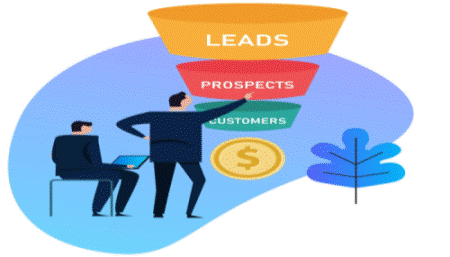Customer Relationship Management – Meaning, Need and Steps in CRM
April 3, 2025
 Customer Relationship Management – Meaning, Need and Steps in CRM
Customer Relationship Management – Meaning, Need and Steps in CRM
In an organization, sales representatives have the responsibility of creating brand awareness and making products popular among the end users. They are the ones who interact with the customers, understand their requirements and fulfill their needs and expectations. What is Customer Relationship Management ? The art of managing the organization’s relationship with the customers and…
 After Sales Service/Customer Service
After Sales Service/Customer Service
Customers are the assets of every business. Sales professionals must try their level best to satisfy customers for them to come back again to their organization. What is After Sales Service? After sales service refers to various processes which make sure customers are satisfied with the products and services of the organization. The needs and…
 How Do Flash Sales Work?
How Do Flash Sales Work?
Flash sales have become extremely popular these days. There are several websites which are dedicated to providing flash sale opportunities to their customers. Rue La La would be a great example of such a website. It exclusively sells products on flash sales and has a turnover of over $100 million. On the other hand, there…
The sales funnel is a concept that is used to visually describe the sales process from initial leads to final closure. It uses the image of a “funnel” where the opportunities are dropped into the funnel and go through the sieve towards each stage.
The opportunities that do not make it to the final stage are described as the “leaky funnel” where they are removed from the funnel and fall by the wayside.
On the other hand, the opportunities that are converted pass through the funnel and into the container.
The sales funnel is a useful representation of the probability of the leads being converted and hence, it has become quite popular among managers and sales and marketing personnel.
The mechanics of the sales funnel denotes the process of the sale progressing through the funnel in steps and at each step, certain actions have to be taken to actualize the sale. This means that organizations have to handhold each stage of the funnel and this entails targeting clients appropriately and removing the barriers that prevent the opportunity from progressing into the next stage.
It is for this reason that organizations develop sales metrics which signify the percentage completion at each stage and which can be used to refine and fine-tune the sales and marketing process through each phase of the funnel.
Indeed, the originators of the sales funnel concept recommend organizations to develop their own sales funnels so that instead of relying on the established pattern, which might or might not work for them, they can customize the funnel according to the specific needs of their business.

The stages in the sales funnel are Lead, Prospect, Qualified Prospect, Committed, and Transacted which when taken together represent the progress of potential sales opportunities through each phase and which might result in actual deals being made.
The aspect of due diligence is important as both the organization and the client have established a rapport after ensuring that the client’s needs and demands are aligned with the organization’s capabilities and the value offered by it.
Further, the determination of fit and alignment is also accompanied by the higher ups of each side taking a personal interest in each other as the groundwork has already been completed. Therefore, this stage can make or break a deal and hence, many organizations prepare elaborate presentations and pitches that are not generic but tailored to the client’s specific needs.
This stage is when contracts are signed and press releases are prepared to announce the deal to the investors and the stock exchanges (if either party or both are publicly listed companies)
We have seen how opportunities can be converted into actual sales and how the stages of the sales funnel indicate the process of the sales leads and their actualization into real deals.
However, not all opportunities are converted into actual deals and if a particular opportunity does not move down the funnel and the sale is not fructified, and then it is known as a leaky funnel opportunity and therefore, must be discarded from the funnel. Of course, this means that the conversion rate takes a hit, which can be a good thing or a bad thing depending on how the organization views that opportunity.
For instance, for many organizations, approaching potential clients is a fact of business and this is done through cold calling, which denotes the approach even at the prospect of being rejected. This does not really bother the company since all that their sales and marketing personnel are interested in is to approach clients who can be converted into opportunities at a later point in time.
Moreover, once the leaky funnel manifests and the opportunity is removed from the funnel, it gives the organization a chance to focus on potentially profitable leads instead of wasting time in chasing dead ends.
Your email address will not be published. Required fields are marked *